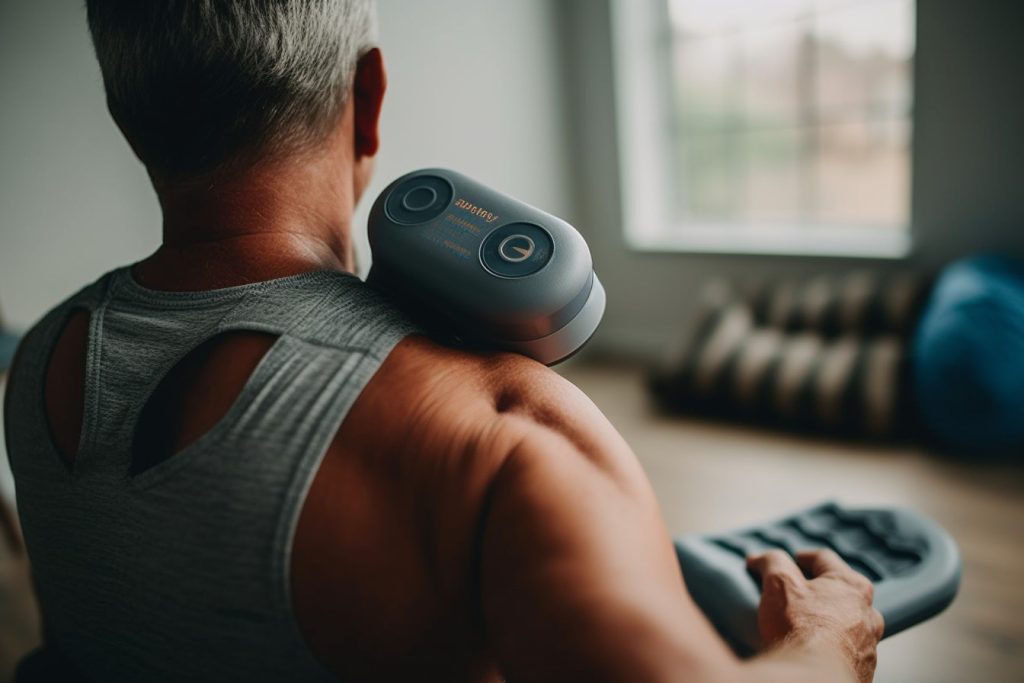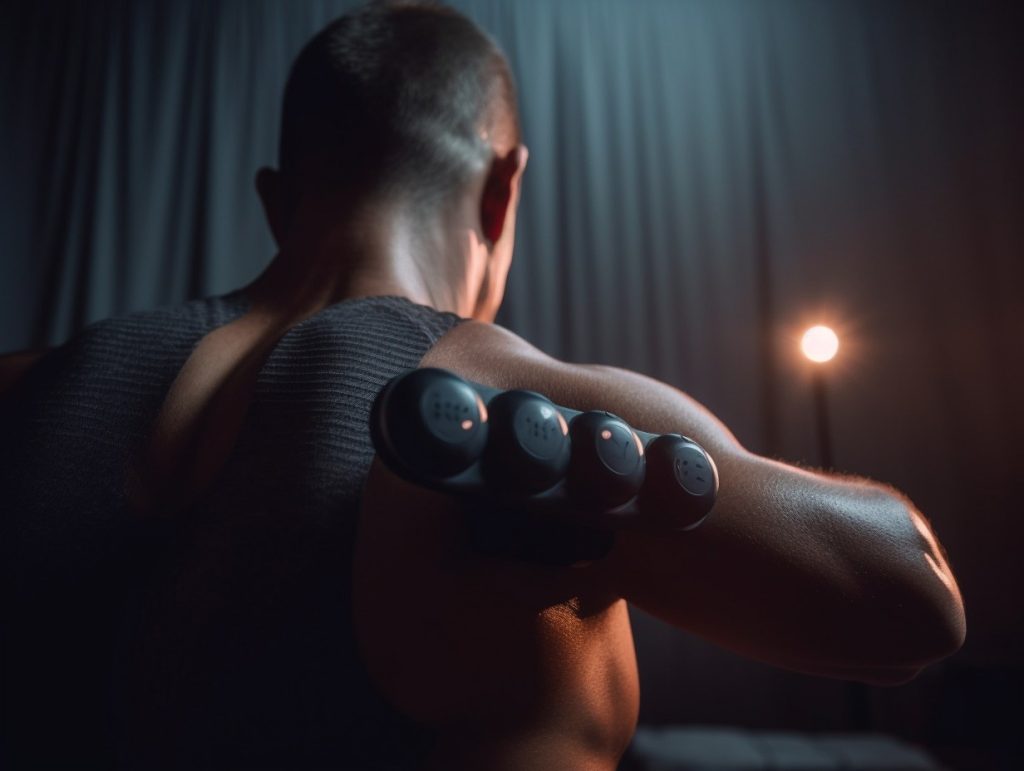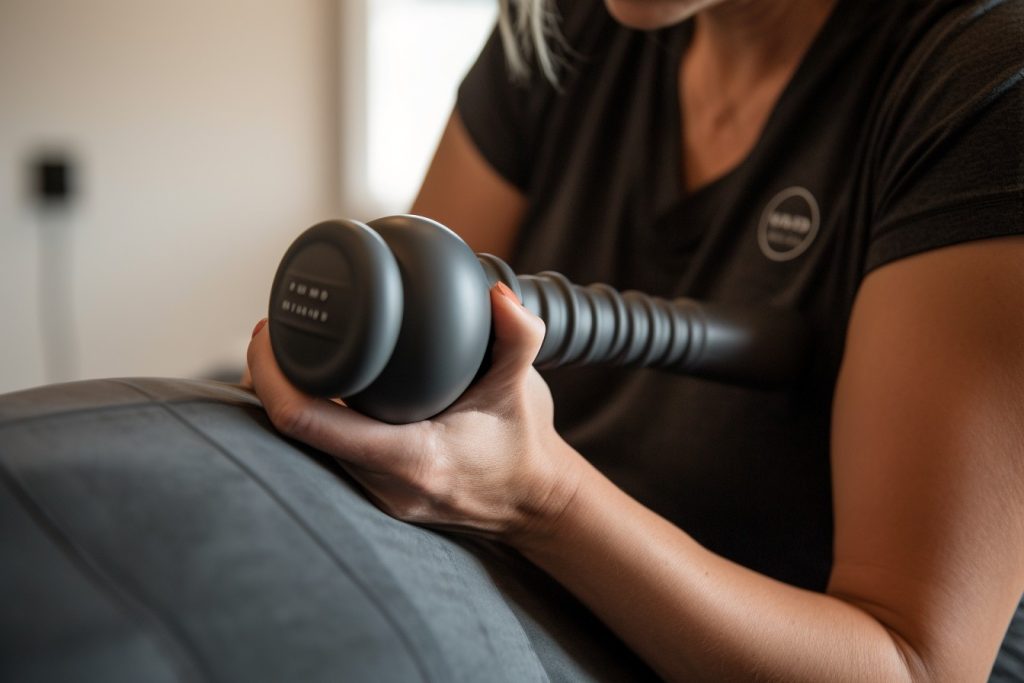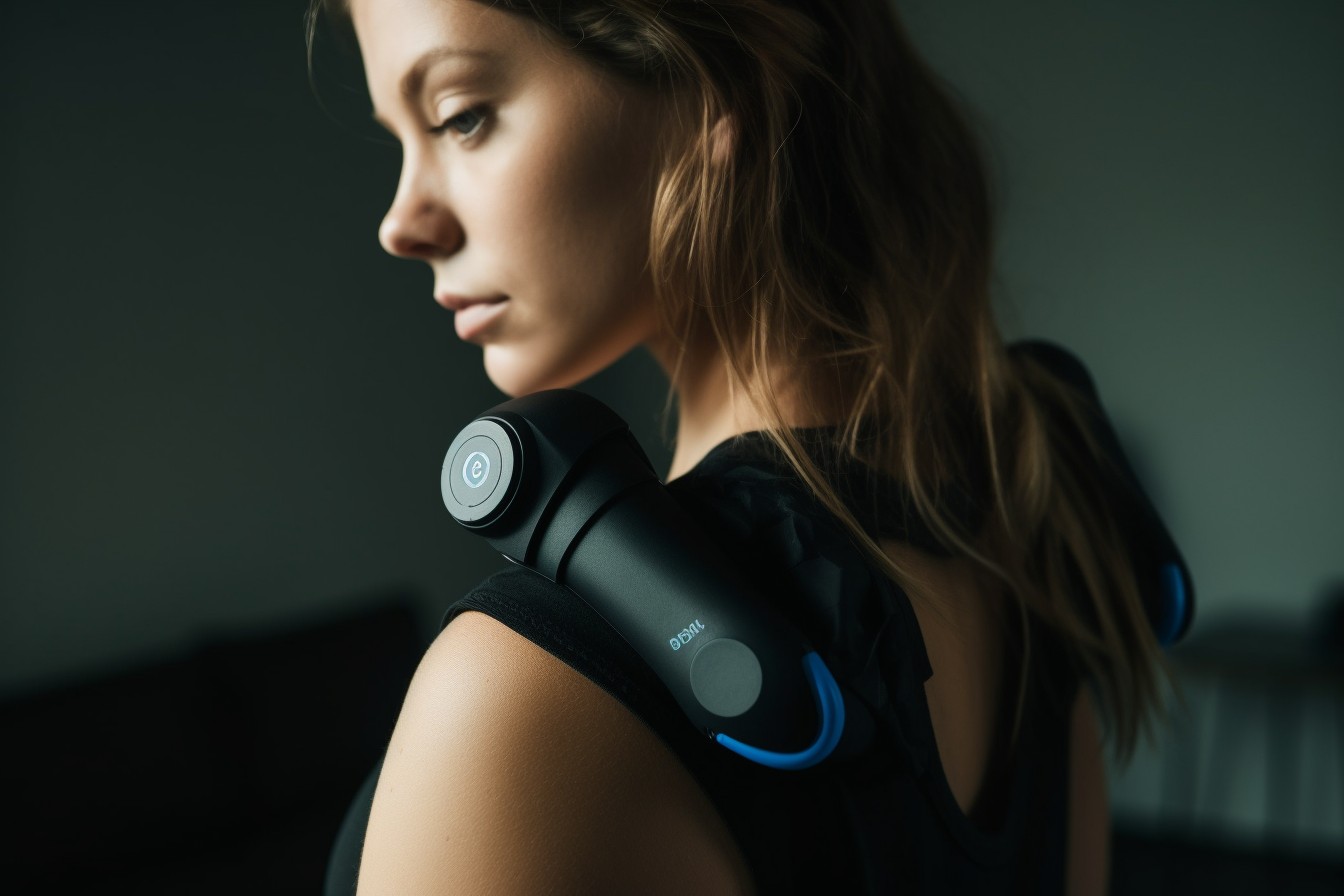Using a percussion massager can be a great way to relieve muscle tension and soreness. However, there are some common mistakes that people make when using these devices that can actually hinder their effectiveness. In this article, we will discuss some of the most common mistakes to avoid when using a percussion massager so that you can get the most out of your device and achieve maximum muscle relief.
Overusing Your Percussion Massager: How to Avoid Injury
Percussion massagers have become increasingly popular in recent years, and for good reason. These handheld devices can provide a deep tissue massage that can help relieve muscle soreness, improve circulation, and reduce stress. However, like any tool, it’s important to use percussion massagers correctly to avoid injury and get the most out of your investment. In this article, we’ll discuss some common mistakes people make when using percussion massagers and how to avoid them.
One of the most common mistakes people make when using percussion massagers is overusing them. While it may feel great to use a percussion massager for an extended period, doing so can actually cause more harm than good. Overuse can lead to muscle soreness, bruising, and even nerve damage. To avoid overuse, it’s important to limit your sessions to no more than 15 minutes at a time. If you feel like you need more time, take a break and come back to it later.
Another mistake people make when using percussion massagers is using too much pressure. While it may seem like more pressure equals a better massage, using too much pressure can actually cause injury. It’s important to start with a low pressure setting and gradually increase it as needed. If you feel any pain or discomfort, stop immediately and adjust the pressure accordingly.
Using a percussion massager on the wrong areas of the body can also lead to injury. It’s important to avoid using a percussion massager on bony areas, such as the spine, knees, and elbows. These areas are more sensitive and can be easily injured. Instead, focus on using the percussion massager on larger muscle groups, such as the back, legs, and arms.
Another mistake people make when using percussion massagers is not properly warming up before use. It’s important to warm up your muscles before using a percussion massager to avoid injury. This can be done through light exercise, stretching, or even a warm shower. Warming up your muscles will help them become more pliable and less prone to injury.
Finally, it’s important to use a percussion massager correctly. This means holding the device at a 90-degree angle to the skin and using a circular motion. Avoid using a back-and-forth motion, as this can cause injury. It’s also important to avoid using a percussion massager on areas with open wounds or bruises.
In conclusion, percussion massagers can be a great tool for relieving muscle soreness, improving circulation, and reducing stress. However, it’s important to use them correctly to avoid injury and get the most out of your investment. Avoid overuse, using too much pressure, using the device on bony areas, not warming up before use, and using the device incorrectly. By following these tips, you can safely and effectively use a percussion massager to improve your overall health and well-being.

Choosing the Wrong Attachment: Maximizing Your Percussion Massager’s Benefits
Percussion massagers have become increasingly popular in recent years, and for good reason. These handheld devices can provide a deep tissue massage that can help relieve muscle soreness, improve circulation, and reduce stress. However, not all percussion massagers are created equal, and using them incorrectly can lead to less than optimal results. In this article, we’ll discuss some common mistakes people make when using percussion massagers and how to avoid them.
One of the most common mistakes people make when using a percussion massager is choosing the wrong attachment. Most percussion massagers come with a variety of attachments, each designed for a specific purpose. For example, a round ball attachment is great for general use, while a fork attachment is ideal for targeting specific muscles. Using the wrong attachment can not only be less effective but can also be uncomfortable or even painful.
To avoid this mistake, take the time to familiarize yourself with the different attachments that come with your percussion massager. Read the instructions carefully and experiment with each attachment to see which one works best for you. Don’t be afraid to try different attachments for different areas of your body. For example, you may find that a flat attachment works better for your back, while a bullet attachment is more effective for your calves.
Another mistake people make when using a percussion massager is using too much pressure. While it may be tempting to apply as much pressure as possible to get the deepest massage, this can actually be counterproductive. Applying too much pressure can cause bruising, soreness, and even injury. It’s important to remember that a percussion massager is designed to provide a deep tissue massage without the need for excessive pressure.

To avoid this mistake, start with a low setting and gradually increase the intensity as needed. Pay attention to your body and adjust the pressure accordingly. If you feel any discomfort or pain, stop immediately and adjust the intensity or switch to a different attachment. Remember, the goal is to provide a deep tissue massage without causing any harm.
Another mistake people make when using a percussion massager is using it for too long. While it may be tempting to use your percussion massager for an extended period of time, this can actually be counterproductive. Overuse can lead to muscle soreness, fatigue, and even injury. It’s important to remember that a percussion massager is designed to provide a deep tissue massage in a short amount of time.
To avoid this mistake, limit your use of the percussion massager to no more than 15 minutes at a time. Take breaks between sessions and allow your muscles to rest and recover. If you feel any discomfort or pain, stop immediately and give your muscles time to recover.
In conclusion, a percussion massager can be a great tool for relieving muscle soreness, improving circulation, and reducing stress. However, it’s important to use it correctly to get the most out of it. Avoiding these common mistakes can help you maximize the benefits of your percussion massager and avoid any potential harm. Remember to choose the right attachment, use the correct pressure, and limit your use to avoid overuse. With these tips in mind, you can enjoy the benefits of a deep tissue massage from the comfort of your own home.
Not Adjusting the Speed: How to Customize Your Massage Experience
Percussion massagers have become increasingly popular in recent years, and for good reason. These handheld devices are designed to provide deep tissue massage, helping to relieve muscle tension, improve circulation, and reduce pain. However, like any tool, percussion massagers can be misused, leading to less-than-optimal results. In this article, we’ll explore some common mistakes people make when using percussion massagers and how to avoid them.
One of the most common mistakes people make when using a percussion massager is failing to adjust the speed. Most percussion massagers come with multiple speed settings, allowing you to customize your massage experience. However, many people simply turn the device on and use it at the default speed, which may not be the best option for their needs.
To get the most out of your percussion massager, it’s important to experiment with different speed settings. If you’re using the device to warm up before a workout, for example, you may want to start with a lower speed setting to gently loosen up your muscles. On the other hand, if you’re using the device to target a specific area of tension, you may want to use a higher speed setting to really work out the knots.
Another mistake people make when using percussion massagers is failing to use the right attachment. Most percussion massagers come with a variety of attachments, each designed to target different areas of the body. For example, a round ball attachment may be best for larger muscle groups, while a pointed attachment may be better for targeting specific trigger points.
To get the most out of your percussion massager, it’s important to use the right attachment for the job. Take some time to experiment with the different attachments and see which ones work best for your needs. You may find that certain attachments work better for certain areas of the body or certain types of massage.
A third mistake people make when using percussion massagers is failing to use proper technique. While percussion massagers are designed to be easy to use, it’s still important to use proper technique to avoid injury and get the best results. For example, you should avoid using the device on bony areas of the body, such as the spine or joints, as this can be painful and potentially harmful.
To use a percussion massager properly, start by applying light pressure to the area you want to massage. Then, slowly increase the pressure as you move the device around the area. Be sure to use a circular motion, rather than a back-and-forth motion, to avoid irritating the skin. And always listen to your body – if something feels uncomfortable or painful, stop using the device immediately.
In conclusion, percussion massagers can be a great tool for relieving muscle tension, improving circulation, and reducing pain. However, to get the most out of your percussion massager, it’s important to avoid common mistakes like failing to adjust the speed, using the wrong attachment, and using improper technique. By taking the time to experiment with different settings and attachments and using proper technique, you can get the most out of your percussion massager and enjoy all the benefits it has to offer.

Ignoring the Battery Life: Tips for Prolonging Your Percussion Massager’s Lifespan
Percussion massagers have become increasingly popular in recent years, and for good reason. They are a great way to relieve muscle tension, improve circulation, and reduce pain. However, like any other electronic device, they require proper care and maintenance to ensure they last as long as possible. In this article, we will discuss some common mistakes people make when using their percussion massagers and how to avoid them.
Ignoring the Battery Life: Tips for Prolonging Your Percussion Massager’s Lifespan
One of the most common mistakes people make when using their percussion massagers is ignoring the battery life. Many people assume that their massager will last forever, but this is not the case. Like any other battery-powered device, the battery in your percussion massager will eventually wear out and need to be replaced.
To avoid this problem, it is important to pay attention to the battery life of your massager. Most percussion massagers come with a rechargeable battery, so it is important to make sure that you are charging it properly. Be sure to read the instructions that came with your massager to ensure that you are charging it correctly.
Another way to prolong the lifespan of your percussion massager is to avoid overcharging it. Overcharging can cause the battery to wear out faster, so it is important to unplug your massager as soon as it is fully charged. Some massagers come with a built-in auto shut-off feature that will turn off the device once it is fully charged, but if your massager does not have this feature, be sure to unplug it as soon as it is fully charged.
Using the Wrong Attachment
Another common mistake people make when using their percussion massagers is using the wrong attachment. Most percussion massagers come with a variety of attachments that are designed for different parts of the body. Using the wrong attachment can not only be ineffective, but it can also be painful.
To avoid this mistake, it is important to read the instructions that came with your massager and familiarize yourself with the different attachments. If you are unsure which attachment to use for a particular area of the body, consult with a healthcare professional or a massage therapist.
Using Too Much Pressure
Using too much pressure when using a percussion massager can also be a mistake. While it may feel good at first, using too much pressure can cause bruising and other injuries. It is important to start with a low pressure setting and gradually increase the pressure as needed.
It is also important to avoid using a percussion massager on areas of the body that are already injured or sore. If you have a specific injury or condition, consult with a healthcare professional before using a percussion massager.
Conclusion
In conclusion, percussion massagers are a great way to relieve muscle tension, improve circulation, and reduce pain. However, it is important to use them properly to avoid common mistakes that can shorten their lifespan or cause injury. By paying attention to the battery life, using the right attachment, and avoiding too much pressure, you can get the most out of your percussion massager and enjoy its benefits for years to come.

Using Your Percussion Massager on the Wrong Body Parts: Understanding Which Areas to Target and Avoid
Percussion massagers have become increasingly popular in recent years, and for good reason. These handheld devices use rapid, percussive movements to target sore muscles and provide relief from pain and tension. However, as with any tool, there are certain mistakes that can be made when using a percussion massager. One of the most common mistakes is using the device on the wrong body parts.
Understanding which areas to target and avoid is crucial when using a percussion massager. While these devices can be incredibly effective at relieving muscle pain and tension, they can also cause harm if used improperly. Here are some tips for using your percussion massager on the right body parts:
Target Large Muscle Groups
When using a percussion massager, it’s important to focus on large muscle groups. These are the areas of the body that are most likely to experience tension and soreness, and they are also the areas that can benefit the most from the deep tissue massage provided by a percussion massager. Some of the best areas to target include the back, shoulders, hips, and thighs.
Avoid Bony Areas
While percussion massagers can be incredibly effective at relieving muscle pain and tension, they can also cause harm if used on bony areas of the body. These areas include the spine, ribs, and joints. Using a percussion massager on these areas can cause bruising, discomfort, and even injury. If you’re unsure whether a particular area of your body is safe to target with a percussion massager, it’s best to err on the side of caution and avoid it altogether.
Be Gentle with Sensitive Areas
Some areas of the body are more sensitive than others, and it’s important to be gentle when using a percussion massager on these areas. This includes areas such as the neck, face, and groin. Using too much pressure or targeting these areas for too long can cause discomfort and even pain. If you’re using a percussion massager on a sensitive area, start with a low intensity setting and gradually increase the intensity as needed.
Avoid Injured Areas
If you have an injury or are recovering from surgery, it’s important to avoid using a percussion massager on the affected area. While these devices can be effective at relieving muscle pain and tension, they can also exacerbate existing injuries and delay the healing process. If you’re unsure whether it’s safe to use a percussion massager on a particular area of your body, consult with a healthcare professional before doing so.
In conclusion, using a percussion massager on the wrong body parts can be a costly mistake. Understanding which areas to target and avoid is crucial when using these devices. By focusing on large muscle groups, avoiding bony areas, being gentle with sensitive areas, and avoiding injured areas, you can get the most out of your percussion massager while minimizing the risk of harm. As with any tool, it’s important to use a percussion massager responsibly and with caution.
Q&A
1. What are some common mistakes people make when using a percussion massager?
– Using too much pressure or speed
– Focusing on one area for too long
– Not using the correct attachment for the desired result
– Using the massager on bones or joints
– Not properly cleaning and maintaining the device
2. How can using too much pressure or speed be harmful?
– It can cause bruising, soreness, or even injury to the muscles
– It can also damage the device itself
3. Why is it important to use the correct attachment for the desired result?
– Different attachments are designed for different areas of the body and types of muscle tissue
– Using the wrong attachment can be ineffective or even harmful
4. What are some tips for avoiding mistakes when using a percussion massager?
– Start with a low pressure and speed setting and gradually increase as needed
– Use the massager for short periods of time on each area of the body
– Read the instructions and use the correct attachment for the desired result
– Avoid using the massager on bones or joints
– Clean and maintain the device regularly
5. What are some benefits of using a percussion massager correctly?
– Improved circulation and muscle recovery
– Reduced muscle soreness and tension
– Increased range of motion and flexibility
– Enhanced athletic performance and overall well-beingConclusion: To get the most out of your percussion massager, it is important to avoid certain mistakes such as using it on bony areas, applying too much pressure, using it for too long, and not cleaning it properly. By following these tips, you can ensure that your percussion massager provides you with the maximum benefits and helps you relieve muscle soreness and tension effectively.


Leave a Reply